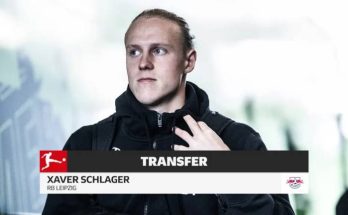The Miami Heat have taken a definitive stance: they have declined to entertain any potential trade offers involving Bam Adebayo, their current All‑Star center. This decision speaks volumes about how the organization views his value, not only as an individual player but as a foundational pillar of their long‑term strategy. By choosing to retain him, the Heat are essentially declaring that his presence on the roster is non‑negotiable and that they see his talents as integral to their vision for both the present and future. In this comprehensive exploration, we’ll dive into what this public refusal reveals about the Heat’s priorities, Bam’s unique skill set, how the league perceives his importance, and what the implications might be for all parties involved.
At the forefront is the player’s own résumé. Bam Adebayo has grown from a promising young talent into a consummate All‑Star who brings a versatile array of skills to the court. His ability to score effectively both in the paint and facing up, coupled with his defensive versatility—able to switch on multiple positions—makes him one of the league’s more valuable two‑way big men. His leadership qualities, particularly on a team with championship aspirations, further deepen his standing. He’s not merely a skilled athlete; he’s the kind of player around whom a franchise can build an identity.
When a team explicitly states that it is unwilling to move a player of Bam’s caliber, the move resonates across multiple levels. To teammates, such a decision sends the message that the organization trusts and believes in them. That fosters stability, which in turn can translate into on‑court chemistry. Bam remains at the defensive helm and offensive fulcrum, helping to anchor rotations and inform strategies both offensively and defensively. An All‑Star center who is also a leader has intrinsic worth that goes far beyond standard box‑score metrics.
From a front‑office and coaching staff perspective, Bam’s refusal to be traded aligns with stability and continuity. The Heat have endured a variety of roster tweaks and positional changes through recent seasons, but Bam has remained a constant presence. For Erik Spoelstra, having that foundation allows for consistent systems—whether it’s the fluid pick‑and‑rolls or the versatile defensive coverages. Continuity makes it easier to make adjustments, integrate younger players, and sustain a high level of execution. Unsettled rosters, in contrast, can slow down developmental arcs, delay strategic implementation, and complicate rotations.
Leaguewide, the status of being “off the market” sends a gangbusters message: the Heat won’t settle. Some teams attempt to leverage this for a raise in offer value, yet the heat-boycott indicates Miami simply has no interest. This can actually lower confusion in trade conjectures; instead of talking about “who might send Bam to whom,” media and fans can focus on exploring how the Heat may build around Bam. What role does a franchise emphasis on a single star like him play in an era when superteams and player movement dominate conversations?
Analyzing the NBA’s trade dynamic, fewer teams today are constructed around a do‑it‑all modern center. Bam more resembles the archetype of a positionless player who can guard perimeter ball‑handlers yet still handle low‑post duties—a rare combination. When that kind of player becomes a franchise core, teams know they need to double down on complementary pieces: shooters, secondary playmakers, and depth at forward. The Heat’s stance essentially declares they’re going all in, doubling down on complementary fits even if that leaves some areas slightly weaker—never easy moves but ones of conviction.
From an asset perspective, Bam’s contract and age create an interesting framework. He’s in his mid‑20s and signed to a multi‑year contract, meaning he belongs to the prime window of NBA value. It provides both wiggle room for contract extensions and flexibility in next‑year balance‑sheet maneuvers. That the Heat could have moved him to open up cap room or reorient the roster but chose not to still indicates they value his presence more than such flexibility. That in turn gives insight into the internal formula being used—namely, that sometimes keeping a superstar in place outweighs the potential piecemeal return of trades.
Media coverage around this announcement also frames how the perception of the Heat shifts. Suddenly, they aren’t just chasing whatever trade emerges. They’re not waffling. They’re settled. When competitors consider matchups, this is critical. Bam’s mobility and defensive awareness make him tough to scheme against—it’s tougher to design mismatches when one’s faced with a capable rim protector who can still step out and switch onto wings. That changes how opponents approach Miami in game planning and series preparations.
Looking ahead to potential future moves, staying put with Bam doesn’t necessarily isolate the Heat from continuing to tweak. They may still package other pieces—role players or draft picks—in search of shot‑making wings, perimeter scorers, or backup centers. But the center of gravity remains clear: Bam anchors the team. This kind of vertical clarity—this “core plus role players” mentality—is reminiscent of traditional NBA team building, although with a modern twist. It’s hard to argue with a strategy that begins with a multi‑dimensional, mobile, modern big man, and then surrounds him with shooting and spacing.
Of course, there are inherent risks. If there’s ever a decline in Bam’s production, health setbacks, or contract disputes, the Heat could find themselves unable to extract value from an immovable asset. That gamble—the cost of loyalty—is real. Does preserving the core risk stagnation if big upgrades come available down the line? Conversely, chemistry, continuity, and settled leadership provide intangible benefits. The Heat will have carefully weighed these uncertainties against the potential catalytic force of a stable, trusted All‑Star foundation.
From Bam’s standpoint, remaining in Miami grants him a platform where he is respected, heard, and relied upon. That standing likely translates into contract leverage, endorsement interest, fan support, and bi‑coastal visibility. Miami isn’t a fringy playoff team—they’re a perennial contender. Bam staying means he can continue competing at the highest level without being uprooted. For his family and personal life, the stability of Miami—a city with a strong basketball culture and growing respect around their player‑first approach—must at least weigh in on his personal and professional valuation of the decision.
It’s also worth noting the broader fan‑psychology and cultural ripple effect. Heat fans have endured years of roster shuffles, coaching churns, even front office turbulence at times. Declining to trade Bam tells the fanbase: this is who we are. It’s a message of identity. In one move, they say: we defend. We fight. We build upward, not tear down. It spikes morale and brings unity. And while enttäuschung always looms in sports, at least the fans can line up behind a recognizable core they care about.
Looking across the league, teams evaluate their own rosters differently. Some think “get the most assets, then build.” Others think “build continuity around a core and maximize current window.” This move places Miami resolutely in the latter camp. It re‑frames discussions among rival execs, coaches, and front‑offices: they can no longer assume Bam is an available piece in blockbuster deals. They might face him instead, and that changes how they plan roster moves, strategy, or cap positioning.
Speaking of strategy, the Heat’s front office now has to optimize the roster around Bam’s skill set. They must seek shooters who can space the floor, secondary playmakers who can relieve him of playmaking pressure, and defenders who can replicate his energy and focus. They may draft or trade for role players—catch‑and‑shoot wings, versatile defenders, rim‑running bigs—pieces who fit the Heat’s blueprint: high basketball IQ, selfless, physical. In doing so, they invest in a system that extends beyond Bam himself. What they do with the rest of the roster could determine whether this lock‑in decision produces a conference‑finals regular or merely upper‑tier playoff exits.
Contextually, the league is abuzz with star movement. With days leading to trade deadlines and free agency windows, franchises hunt for upgrades. That Miami is removing one star player from the equation means they aren’t buyers. They’re acting already like a stable operation, not a desperate one. It communicates confidence: “We believe in who we are.” That kind of positioning can be persuasive to free agent camps, who value organizational stability almost as much as compensation. Bam stays, so does Miami. That’s an argument every potential recruit can understand and respect.
Zooming out, this decision is more than just about one player—it’s a lesson in franchise-building philosophy. In a moments-saturated world that values star-chasing, Miami remains committed to discipline and structure. They’d rather optimize internally than gamble on external splash. It’s reminiscent of their post-Dwyane era survival strategy—quietly, no headlines, but shooting shots and making the conference finals. Strategic conservatism is their default. Bam’s lock-in is more evidence: continuity, defense, coach stability, farm development—all inks down.
Still, sharp outsiders will scrutinize the cost. Is tapping the brakes safe, or does it risk missing the next rung? Should they have shopped Bam to land a Russell Westbrook-type playmaker, an elite sharpshooter, or a second All‑Star? Would that pursuit have elevated them quicker at the expense of upsetting chemistry? These debates follow stories like this. But Miami made the call.
In sum, Miami’s decision to decline trades for Bam Adebayo is a clear, assertive declaration. They have identified their core, recognized its value, assessed the league landscape, and opted for strategic continuity over fire-sales or splash trades. It shifts the narrative from “who might they offer” to “how will they build around him” and in so doing, reveals as much about team culture, priorities, and beliefs as Swiss financial privacy. Bam’s staying sends a message—to teammates, rival executives, fans, and the wider NBA—that the Heat’s foundation runs through his presence, and any challenge to that would require them to change their identity. The choice shapes their roster actions ahead and embodies a strategic posture bold in its simplicity: we keep our cornerstone, and we build up, not tear down.


